Have you ever walked into a home that was beautiful on the outside but felt let down by the interior? As if there was some sort of disconnect between the architectural notes of the property and the home staging design? Or, perhaps you hired a stager, but the end result was far different than what you expected?
We can avoid these pitfalls by incorporating what’s popular in design today, but also by understanding which interior design styles work best for a given architecture. Furthermore, by defining a common language for discussing design, we are able to identify expectations earlier in the home staging process and increase the likelihood that they’ll be met.
In this post, we take a look at our Top 5 Home Staging Designs To Know and the most common architectures where you’ll see them used.
1. Traditional
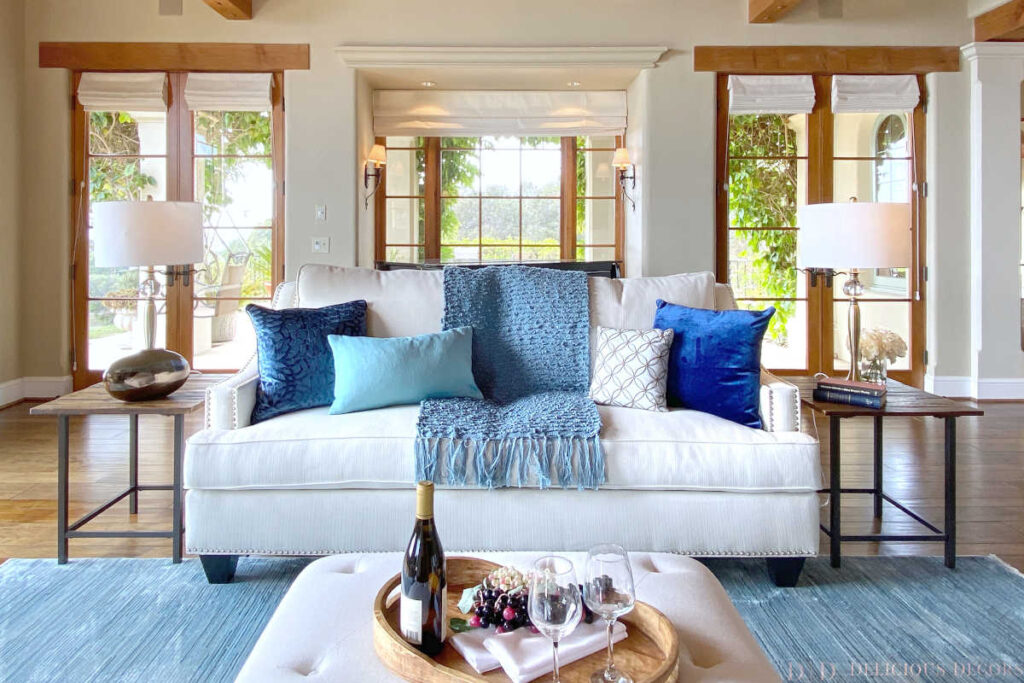
Marked by elegance and luxury, this interior design style best compliments Mediterranean, Spanish, and Farmhouse architectures.
Design elements such as dark wood furniture, ornate décor, and rich, warm colors are characteristic of a traditionally styled room. Edging on cozy, traditional style furniture such as overstuffed cushions, tufted pieces, wood tables and furniture legs, and natural fiber rugs create a space in which potential homebuyers can envision comfortable family gatherings or curling up with a good book.
This style works well to compliment architectural features such as exposed wood ceiling beams, fireplaces, and curved windows and entryways, commonly found in the indicated types of homes.
2. Contemporary
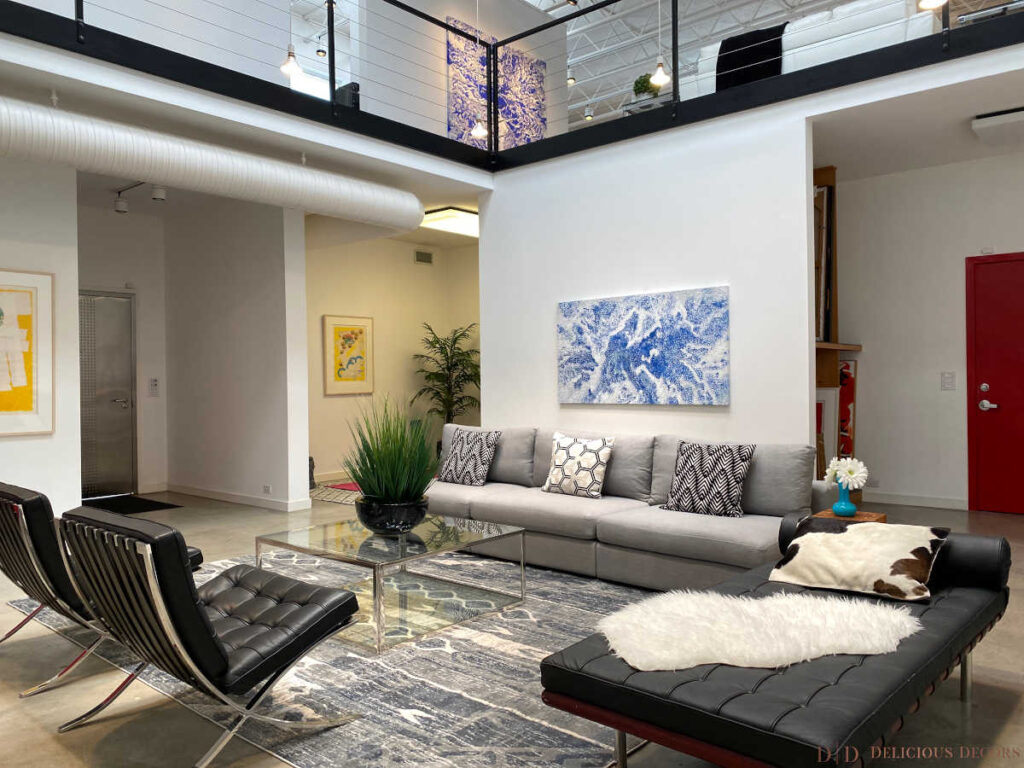
It comes as no surprise that the best style to compliment a Modern or Contemporary architecture is in fact contemporary interior design.
While Contemporary is by definition always changing to capture the zeitgeist of today, it is also characterized by clear lines, simplicity, bold furniture pieces, and neutral colors, which can create a striking unveiling during the showing process. Consistent with the architectural elements of this category, the color palette when staging typically consists of blacks, whites, greys, and a bold, typically primary accent color, to bring light to a space. Furniture with 90-degree angles and metal accents effectively contributes to the sleek, contemporary aesthetic.
This design style works exceptionally with open floor plans to further showcase the vast amount of space through minimalism, with an uncluttered visual. Relevant décor such as mirrors, glass, chrome, and abstract (sometimes unframed) art are a drastic opposite to our previous category.
Contemporary design is equally appropriate for office, living, and loft spaces and works well to capitalize on structural elements such as exposed air ducts, pipes, or brick. Not just reserved for urban settings, a contemporary design alludes a fresh and sophisticated atmosphere for refined dinner parties and a trendy lifestyle.
3. Mid-Century Modern
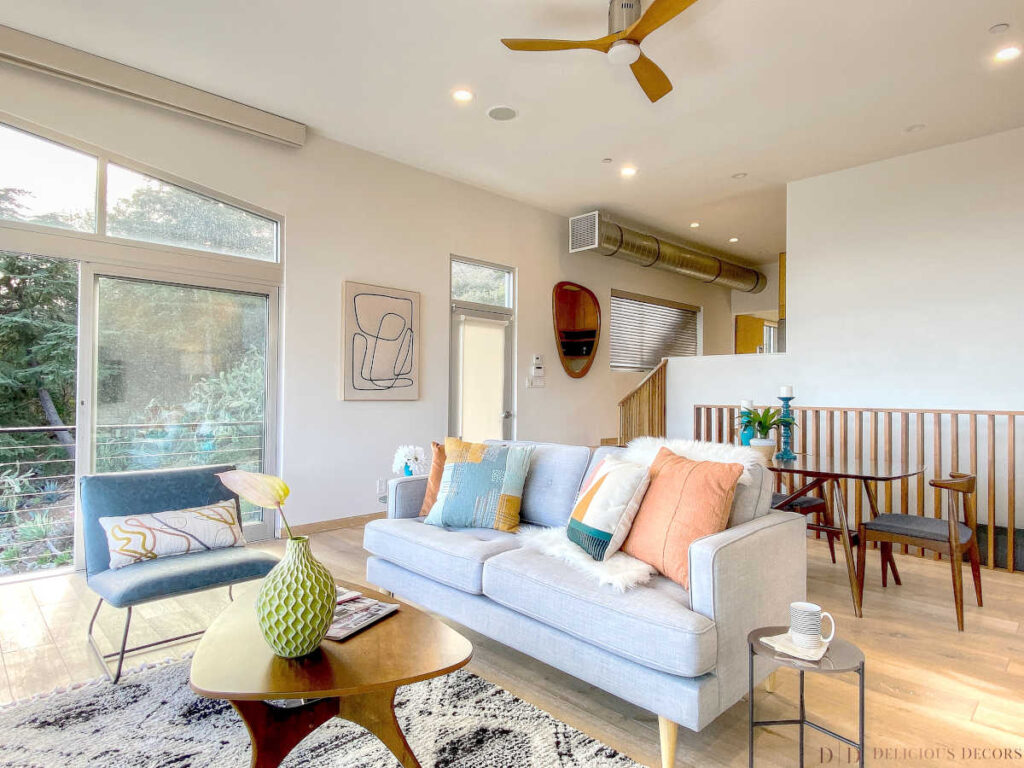
“Vintage! So adorable.” Design elements indicative of the mid 1930’s – 1960’s are just that, adorable. This fun style borrows the clean, minimalistic Scandinavian lines of contemporary and adds in pops of color, contrasting textures, and a fusion of organic materials.
There’s a reason the iconic styles from this era have been copied and revived time and time again. Thanks to its popularity in production, it’s rare that we need to shop at the antique stores for appropriate items, although it certainly never hurts! Not to mention the motivation behind the creation of many mid-century pieces is still relevant today: functionality, space conservation, and comfort.
With mid-century modern, the possibilities seem endless. Warm brown woods, rattan furniture, multiple textures, big splashes of color from pastels to jewel-tones, and geometric shapes give us a lot to play with when styling Mid-century Modern (of course!), Modern, Craftsman, Victorian, and Farmhouse architectures. Art deco artwork and décor can quickly bring life to a room. Reminiscent of that timeless period, a mid-century modern home appeals to many homebuyers who seek a fun and artsy oasis.
4. Boho Chic
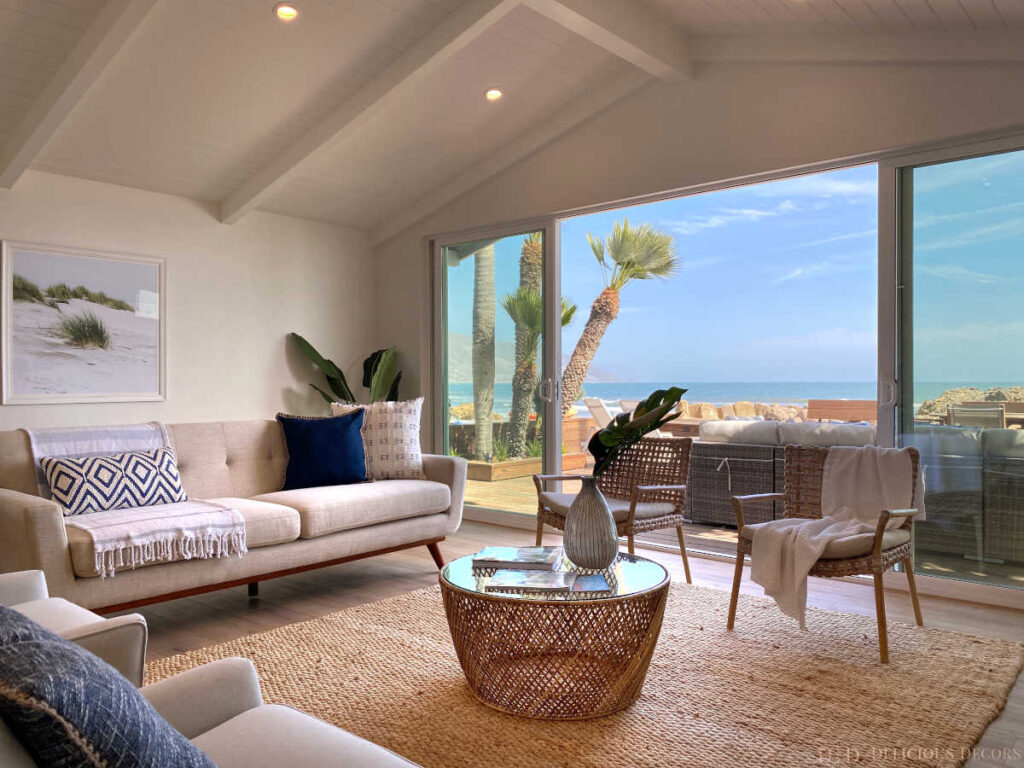
Get in touch with nature with this next design category. A popular design choice for Beach Bungalows, Modern, and Craftsman style homes, boho chic introduces earthy and global accents that lend a relaxed, casual, and carefree sensation the minute you step foot in the room.
In this category we focus on natural materials like natural fiber or cowhide rugs, light to medium-colored woods, cotton, and linen. Global décor pieces like woven baskets, Aztec blankets or boho throws, and accent plants are great compliments to a typically neutral base. Likewise, saturated color palettes are also welcomed to contrast the simple components of the room. Palettes of blush, yellows, oranges, and blues are perhaps utilized the most in our boho chic arrangements which effortlessly contribute a coastal serenity to the space.
A worldly or outdoors-loving prospective buyer is certain to be tempted by the endless vacation vibes this design style delivers.
5. Transitional
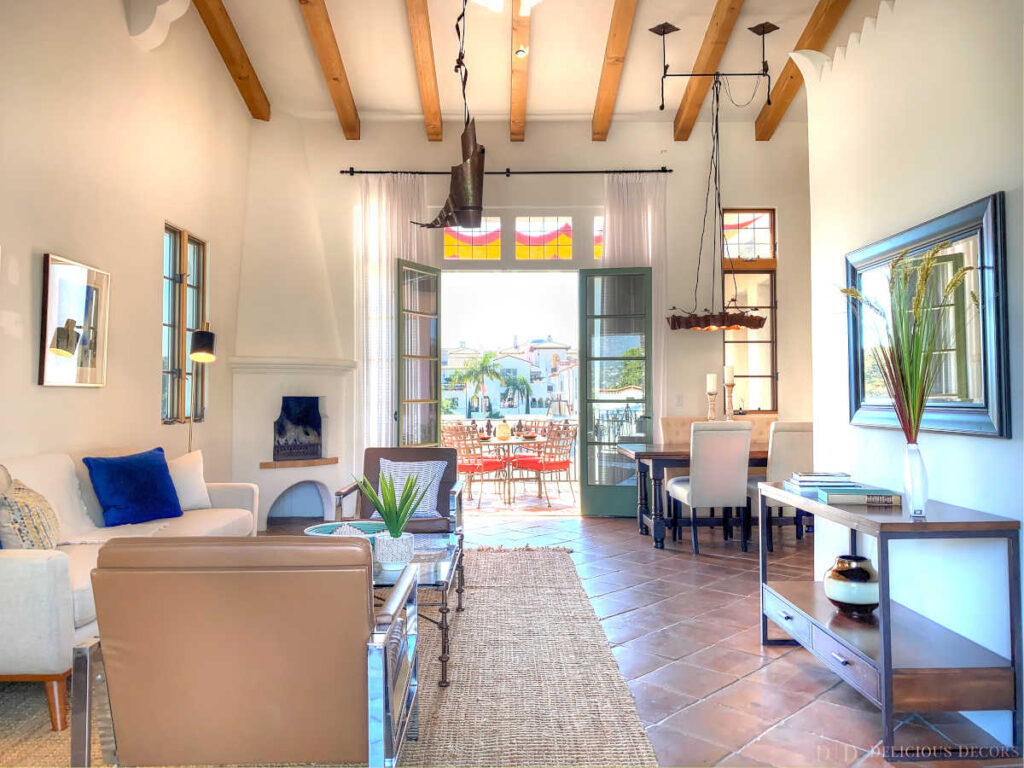
If you’re not sure your home truly fits into any of the above categories, or if your home falls under the traditional category but you want something a bit more modern, transitional is undoubtedly your way to go. Neutral, comfortable, and crisp, it’s sure to please them all.
Transitional décor blends the best of both modern and traditional. It’s a moderate space where opposites can compromise and harmoniously exist together: straight lines and curves, masculine and feminine features, classic and hip, comfortable and functional, minimalist and maximalist. The key here is not to overdo any one component but stick to neutral colors and natural fabrics and materials like leather, wood, chenille, linen, suede, etc.
This décor category is sleek, clean, and fresh for everyday living. Since transitional doesn’t fully commit to any one distinct design style, it is a safe choice when preparing your home for showing especially if you have a particularly diverse target demographic.
Conclusions
While interior design and architecture are nuanced and not something we all grow up learning about in school, the effect of (good and bad) design is undeniably prevalent in all of our lives. In the context of real estate, good home staging design can be leveraged to maximize ROI for sellers and help buyers envision themselves in spaces that may otherwise be overlooked or undervalued.
At Delicious Decors, we take a Best Value approach that makes custom-designed, high-quality home staging accessible for all property types and sizes. We hope this post serves as a useful baseline for understanding and discussing home staging design so that you can get improved results.
Check out our portfolio to see more examples of these design styles and, as always, thank you for reading!
Team DD
